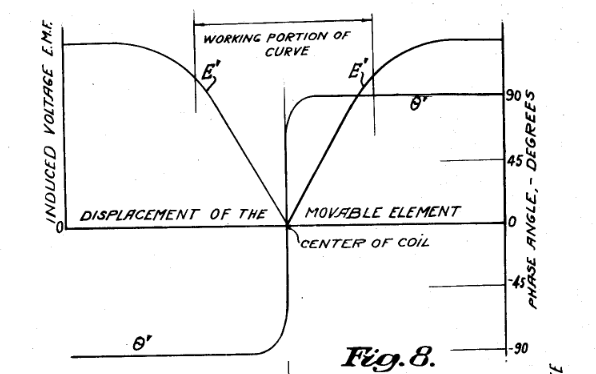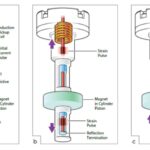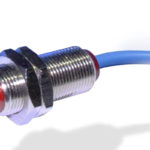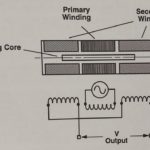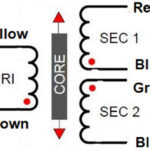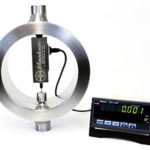The linear variable differential transformer (LVDT) is a widely used, inherently rugged, linear-position sensor offering accurate and consistent performance over a wide span of distances.
Part 1 of this FAQ looked at the basic operation of the LVDT. This part looks at some of its other performance attributes and characteristics.
Q: What does an LVDT cost?
A: Obviously, the price varies with the size, materials, and other factors, but basic LVDTs range from about a hundred dollars to several hundred dollars. This does not include electronic circuitry for primary-side excitation and secondary-side signal conditioning.
Q: Why is the LVDT so widely used?
A: LVDTS are widely used due to their unique combination of performance attributes. Among them:
- Accuracy and repeatability: there is almost no technical aspect of operation which degrades their performance from initial specifications.
- Friction-free operation: there is no mechanical contact between the LVDT’s core and coil assembly, so there is no rubbing, dragging, or other source of friction to affect measurement accuracy.
- Infinite resolution and high repeatability: the friction-free structure means it can measure infinitesimally small changes in core position, limited only by the noise and resolution of the electronics.
- Unlimited mechanical life: there is no contact between the coil and core, so there are no parts that can rub together or wear out.
- Overtravel damage resistance: The internal bore of most LVDTs is open at both ends, so the core can pass completely through the sensor coil assembly without causing damage (although the electrical output is no longer valid). This is especially useful for applications such as extensometers in tensile test set-ups where the sample is tested to destruction and suddenly breaks.
- Single-axis sensitivity: The LVDT signal is not affected by cross-axis motion of the core or to its radial position of the core in the bore and so can work where the extension does not travel in an absolutely straight line.
- Inherently rugged: The fundamental design, materials, and construction of the LVDT results in a rugged, durable sensor with excellent moisture and humidity resistance, as well as the ability to withstand shock loads and high vibration levels. Its internal high-permeability magnetic shield minimizes the interference effects of external AC fields. The case and coil assembly can be hermetically sealed for use in corrosive atmospheres. Further, while standard LVDTs can operate over a very wide temperature range, they can be manufactured to operate down to cryogenic temperatures, to elevated temperatures, and even despite radiation levels in nuclear reactors.
- Fast dynamic response: the dynamic response of an LVDT sensor itself is limited only by the inertia of the core’s mass, which is relatively small.
- Absolute output: the LVDT is an absolute-output device, not an incremental output device. That means that on power-up or in the case of power loss, the position data signal from the LVDT will be correct; no initialization, re-zeroing, or calibration is needed.
Q: Over what travel/measurement range are LVDTSs available? What is the typical accuracy?
A: Standard LVDTS are available from about 0.2 inches (5 mm) to 10 and even 20 inches (25 and 50 cm). Accuracy is about 0.1% to 0.5% of reading but can be better.
Q: What’s the history of the LVDT?
A: The LVDT’s was proposed in U.S. Patent 2196809 (1936) by George B. Hoadly, entitled “Telemetric System”, which the patent states is intended as “…a system for the electrical transmission of intelligence at a distance,” (Figure 1). In 1946, Herman Schaevitz published a paper “The Linear Variable Differential Transformer,” which described an LVDT design which is nearly identical to the LVDTs sold commercially.
Q: Who are some vendors of LVDTs?
A: There are many LVDT vendors, among them TE Connectivity, Trans-Tek, Omega Engineering, and the Alliance Sensors Group. The latter is a division of H. G. Schaevitz LLC and is run by second- and third-generation descendants of Herman Schaevitz of LVDT origins. There are also highly focused LVDT vendors who make them for specific applications only, such as nuclear installations.
A subsequent FAQ will look in detail at the electrical signals, interface, and circuitry of the LVDT, as well as techniques for calibration of the LVDT (rarely needed) and its interface circuitry.
EE World References
The proving ring – An alternative to dead-weight calibration, Part 2
Miniature LVDT Position Sensors Operate In Applications With Harsh, High-Pressure Environments
Miniature LVDT sensors provide accurate position/path measurements in tight spaces
Radiation Resistant LVDT Linear Position Sensor Designed For Nuclear Power Generation Plants
LVDT position sensors provide feedback in robotic applications
High-Pressure And Seawater-Resistant Position Sensors
Extreme High-Temperature Position Sensors
External References
S. Patent 2,196,809, “Telemetric System”
Sensor Wiki, “Linear Variable Differential Transformer (LVDT)”
Wikipedia, “Linear variable differential transformer”
TE Connectivity, “LVDT Tutorial”
Omega Engineering, “What is an LVDT?”
H.G. Schaevitz LLC/Alliance Sensors Group, “LVDT Position Sensor Products”
Analog Devices, “Linear Variable Differential Transformers”
Analog Devices, “Two New LVDT Interface ICs Offer Choice of Analog or Digital Output”
Analog Devices, ”Precision LVDT Signal Conditioning Using Direct RMS to DC Conversion”
Analog Devices, “Low Power LVDT Signal Conditioner with Synchronous Demodulation”
Texas Instruments, “Ratiometric measurements in the context of LVDT-sensor signal conditioning”
Texas Instruments, “PGA970 Use Case for LVDT Applications“

